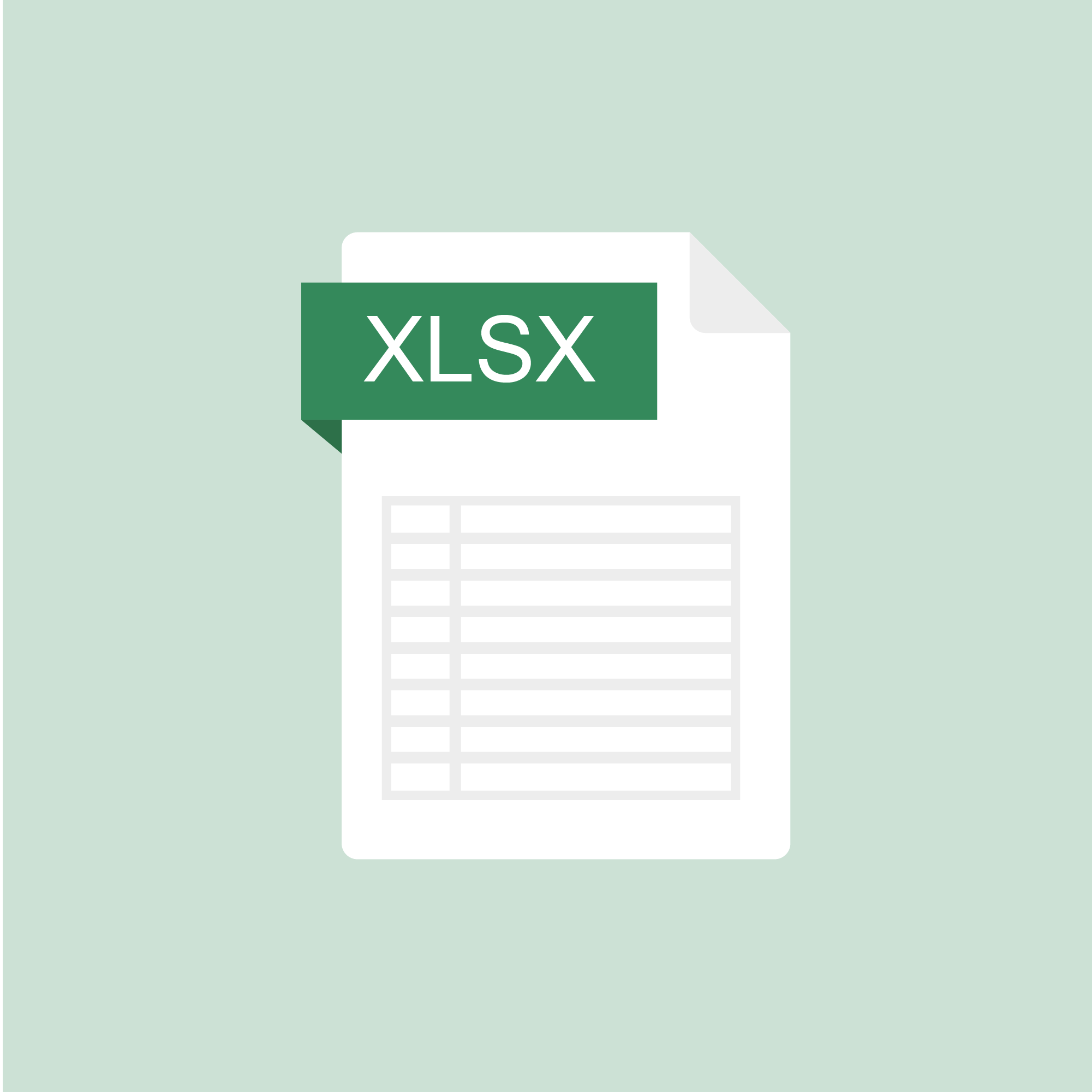Browse
Disciplinary Content
Posted on: #iteachmsu

DISCIPLINARY CONTENT
Cost of energy 11
n 2020 there are subtle shifts in energy consumption. The U.S. Energy Information Administration Outlook predicts U.S. energy production to be segmented as follows:
Share
2019
2020
Natural gas-fired power plants
34%
37%
Coal
25%
22%
Nuclear
20%
20%
Renewables (including hydro power)
17%
19%
Cost
2019
2020
Residential electricity
13.0 kw
13.12 kw
Industrial electricity
6.8 kw
6.84 kw
Natural gas
2.83 btu
2.70 btu
Share
2019
2020
Natural gas-fired power plants
34%
37%
Coal
25%
22%
Nuclear
20%
20%
Renewables (including hydro power)
17%
19%
Cost
2019
2020
Residential electricity
13.0 kw
13.12 kw
Industrial electricity
6.8 kw
6.84 kw
Natural gas
2.83 btu
2.70 btu
Authored by:
Chathuri hewapathirana

Posted on: #iteachmsu


Cost of energy 11
n 2020 there are subtle shifts in energy consumption. The U.S....
Authored by:
DISCIPLINARY CONTENT
Friday, Apr 10, 2020
Posted on: #iteachmsu

DISCIPLINARY CONTENT
Cost of energy
n 2020 there are subtle shifts in energy consumption. The U.S. Energy Information Administration Outlook predicts U.S. energy production to be segmented as follows:
Share
2019
2020
Natural gas-fired power plants
34%
37%
Coal
25%
22%
Nuclear
20%
20%
Renewables (including hydro power)
17%
19%
Cost
2019
2020
Residential electricity
13.0 kw
13.12 kw
Industrial electricity
6.8 kw
6.84 kw
Natural gas
2.83 btu
2.70 btu
Share
2019
2020
Natural gas-fired power plants
34%
37%
Coal
25%
22%
Nuclear
20%
20%
Renewables (including hydro power)
17%
19%
Cost
2019
2020
Residential electricity
13.0 kw
13.12 kw
Industrial electricity
6.8 kw
6.84 kw
Natural gas
2.83 btu
2.70 btu
Authored by:
Chathuri hewapathirana

Posted on: #iteachmsu


Cost of energy
n 2020 there are subtle shifts in energy consumption. The U.S....
Authored by:
DISCIPLINARY CONTENT
Friday, Apr 10, 2020
Posted on: #iteachmsu

DISCIPLINARY CONTENT
Intergovernmental Panel on Climate Change
PPTx
Observational evidence from all continents and most oceans shows that many natural systems are being affected by regional climate changes, particularly temperature increases." –Intergovernmental Panel on Climate Change (IPCC), 2007
Explore the signs of global warming on this map or Google Earth. The evidence of climate change includes heat waves, sea-level rise, flooding, melting glaciers, earlier spring arrival, coral reef bleaching, and the spread of disease.
The greatest concentration of global warming indicators on the map is in North America and Europe because that is where most scientific investigation has been done to date. As scientists focus increasingly on fingerprints of global warming in other regions—from Russia to Antarctica and Oceania to South America—the evidence they find will be added to the map.
Scientists project that unless emissions of heat-trapping gases are brought undercontrol, the impacts of climate change are likely to increase.
Observational evidence from all continents and most oceans shows that many natural systems are being affected by regional climate changes, particularly temperature increases." –Intergovernmental Panel on Climate Change (IPCC), 2007
Explore the signs of global warming on this map or Google Earth. The evidence of climate change includes heat waves, sea-level rise, flooding, melting glaciers, earlier spring arrival, coral reef bleaching, and the spread of disease.
The greatest concentration of global warming indicators on the map is in North America and Europe because that is where most scientific investigation has been done to date. As scientists focus increasingly on fingerprints of global warming in other regions—from Russia to Antarctica and Oceania to South America—the evidence they find will be added to the map.
Scientists project that unless emissions of heat-trapping gases are brought undercontrol, the impacts of climate change are likely to increase.
Posted by:
Rohit 936 shinde

Posted on: #iteachmsu


Intergovernmental Panel on Climate Change
PPTx
Observational evidence from all continents and most oceans sho...
Observational evidence from all continents and most oceans sho...
Posted by:
DISCIPLINARY CONTENT
Friday, Apr 10, 2020
Posted on: #iteachmsu

DISCIPLINARY CONTENT
5.9 Heat of Reaction for Processes with Biomass Production
Biochemical reactions in cells do not occur in isolation but are linked in a complex array of metabolic transformations. Catabolic and anabolic reactions take place at the same time, so that energy released in one reaction is used in other energy-requiring processes. Cells use chemical energy quite efficiently; however some is inevitably released as heat. How can we estimate the heat of reaction associated with cell metabolism and growth?
5.9.1 Thermodynamics of Cell Growth
As described in Section 4.6.1, a macroscopic view of cell growth is represented by the equation:
(4.4)CwHxOyNz+aO2+bHgOhNi⟶cCHαOβNδ+dCO2+eH2O
origin of chromosome replication and, thus, are replicated early. This arrangement ensures
Energy Balances
5.9 Heat of Reaction for Processes with Biomass Production
Biochemical reactions in cells do not occur in isolation but are linked in a complex array of metabolic transformations. Catabolic and anabolic reactions take place at the same time, so that energy released in one reaction is used in other energy-requiring processes. Cells use chemical energy quite efficiently; however some is inevitably released as heat. How can we estimate the heat of reaction associated with cell metabolism and growth?
5.9.1 Thermodynamics of Cell Growth
As described in Section 4.6.1, a macroscopic view of cell growth is represented by the equation:
(4.4)CwHxOyNz+aO2+bHgOhNi⟶cCHαOβNδ+dCO2+eH2O
origin of chromosome replication and, thus, are replicated early. This arrangement ensures
Authored by:
Pauline M. Doran,

Posted on: #iteachmsu

5.9 Heat of Reaction for Processes with Biomass Product...

Energy Balances
5.9 Heat of Reaction for Processes with Biomass Product...
Authored by:
DISCIPLINARY CONTENT
Tuesday, Mar 31, 2020
Posted on: #iteachmsu

DISCIPLINARY CONTENT
Biochemical Reaction
Escherichia coli☆
D. Liu, in Encyclopedia of Microbiology (Fourth Edition), 2019
Cytoplasm
Biochemical reactions necessary for the growth of E. coli mostly take place in the cytoplasm. These activities are divided into those concerned with metabolic fueling (production of energy, reducing power, and precursor metabolites), biosynthesis of building blocks, polymerization into macromolecules, and assembly of cell structures. In fast-growing E. coli, much of the cytoplasmic space is taken up by ribosomes. The number of ribosomes per cell is proportional to the growth rate, ranging from about 2000 in cells growing at 37 °C peptidoglycan layer peptidoglycan layer at doubling rates of 0.2 per hour to > 70 000 at a doubling rate of 2.5 h per hour, where they make up about 40% of the cell mass. In E. coli, the genes for the four ribosomal RNAs (16S, 23S, 5S, transfer) are arranged in seven operons located at different sites on the chromosome.
Most of these operons are found near the origin of chromosome replication and, thus, are replicated early. This arrangement ensures
D. Liu, in Encyclopedia of Microbiology (Fourth Edition), 2019
Cytoplasm
Biochemical reactions necessary for the growth of E. coli mostly take place in the cytoplasm. These activities are divided into those concerned with metabolic fueling (production of energy, reducing power, and precursor metabolites), biosynthesis of building blocks, polymerization into macromolecules, and assembly of cell structures. In fast-growing E. coli, much of the cytoplasmic space is taken up by ribosomes. The number of ribosomes per cell is proportional to the growth rate, ranging from about 2000 in cells growing at 37 °C peptidoglycan layer peptidoglycan layer at doubling rates of 0.2 per hour to > 70 000 at a doubling rate of 2.5 h per hour, where they make up about 40% of the cell mass. In E. coli, the genes for the four ribosomal RNAs (16S, 23S, 5S, transfer) are arranged in seven operons located at different sites on the chromosome.
Most of these operons are found near the origin of chromosome replication and, thus, are replicated early. This arrangement ensures
Authored by:
Chathuri

Posted on: #iteachmsu


Biochemical Reaction
Escherichia coli☆
D. Liu, in Encyclopedia of Microbiolog...
D. Liu, in Encyclopedia of Microbiolog...
Authored by:
DISCIPLINARY CONTENT
Tuesday, Mar 31, 2020
Posted on: #iteachmsu

DISCIPLINARY CONTENT
School performance, social networking effects, and learning of school children
Test content
School performance, social networking effects, and learning of school children
Abstract
This study uses structural equations modeling to test a hypothetical social network model with applications to a sample of 34,896 school children in Abu Dhabi. The main independent constructs in the model are related to children’s attitude with regard to social networking, reasons for using social networks, things done on social networks, and topics used. The dependent constructs cover perceived school performance and social effects of social networking. The study will describe the relations among the various constructs. The effect of other variables, such as parental knowhow, is also investigated. Our work has improved our insight in the social networking model. Results support the idea of reciprocal relations among perceived performance, learning from social networking, and the effect of social networking. Evidence for a model that includes opposite pathways implies that the problem of social networking constructs, its antecedents, and possible consequences should be examined with caution.
School performance, social networking effects, and learning of school children
Abstract
This study uses structural equations modeling to test a hypothetical social network model with applications to a sample of 34,896 school children in Abu Dhabi. The main independent constructs in the model are related to children’s attitude with regard to social networking, reasons for using social networks, things done on social networks, and topics used. The dependent constructs cover perceived school performance and social effects of social networking. The study will describe the relations among the various constructs. The effect of other variables, such as parental knowhow, is also investigated. Our work has improved our insight in the social networking model. Results support the idea of reciprocal relations among perceived performance, learning from social networking, and the effect of social networking. Evidence for a model that includes opposite pathways implies that the problem of social networking constructs, its antecedents, and possible consequences should be examined with caution.
Authored by:
Chathuri hewapathirana

Posted on: #iteachmsu


School performance, social networking effects, and learning of school children
Test content
School performance, social networking effects, and lea...
School performance, social networking effects, and lea...
Authored by:
DISCIPLINARY CONTENT
Thursday, Feb 6, 2020
Posted on: #iteachmsu

DISCIPLINARY CONTENT
Help and Support Resources
Customer Support Process
MSU IT is available 24/7 to support your IT needs. Contact the MSU IT Service Desk using one of the methods listed below:
Option 1:Call (517) 432-6200 or toll-free at (844) 678-6200
Always call if you need a prompt response
You will be presented with six options, for most problems in your area you will want to dial six for general IT Service Desk assistance. The other options are as follows:
Option 1: Classroom Support
Option 2: Distance Learning Services such as D2L
Option 3: Clinical and Radiology Systems such as EMR, ARIS, or PACS
Option 4: EBS or other business or administrative services
Option 5: Student assistance with Internet access, login, or email questions
Option 6: Wait on the line (general IT Service Desk assistance
Choose Option 6 or stay on the line for assistance with anything not specifically listed above.
Option 2: Email ithelp@msu.edu<mailto:ithelp@msu.edu>
Option 3: Use the Self-Service Portal <https://uss.itservicedesk.msu.edu/web/frontoffice/login?redirect=/>
Log in with your NetID
Select either "Report an Issue," "Request a Service," or "Search Knowledge Base" depending on your needs
Contact ithelp@msu.edu<mailto:ithelp@msu.edu> if pre-populated fields are not correct
If using Internet Explorer, consult Knowledge Base document #404713 if errors are encountered
Help Resources
Perform the following steps to gain access to tutorials, help documentation, post questions, and see release notes:
Login to #iteachmsu Commons
Navigate to the Help and Support Group from the Home screen.
Click on the Join Group button
Check the "Getting started in the #iteachmsu Digital Commons" playlist for tutorials and helpdesk information.
MSU IT is available 24/7 to support your IT needs. Contact the MSU IT Service Desk using one of the methods listed below:
Option 1:Call (517) 432-6200 or toll-free at (844) 678-6200
Always call if you need a prompt response
You will be presented with six options, for most problems in your area you will want to dial six for general IT Service Desk assistance. The other options are as follows:
Option 1: Classroom Support
Option 2: Distance Learning Services such as D2L
Option 3: Clinical and Radiology Systems such as EMR, ARIS, or PACS
Option 4: EBS or other business or administrative services
Option 5: Student assistance with Internet access, login, or email questions
Option 6: Wait on the line (general IT Service Desk assistance
Choose Option 6 or stay on the line for assistance with anything not specifically listed above.
Option 2: Email ithelp@msu.edu<mailto:ithelp@msu.edu>
Option 3: Use the Self-Service Portal <https://uss.itservicedesk.msu.edu/web/frontoffice/login?redirect=/>
Log in with your NetID
Select either "Report an Issue," "Request a Service," or "Search Knowledge Base" depending on your needs
Contact ithelp@msu.edu<mailto:ithelp@msu.edu> if pre-populated fields are not correct
If using Internet Explorer, consult Knowledge Base document #404713 if errors are encountered
Help Resources
Perform the following steps to gain access to tutorials, help documentation, post questions, and see release notes:
Login to #iteachmsu Commons
Navigate to the Help and Support Group from the Home screen.
Click on the Join Group button
Check the "Getting started in the #iteachmsu Digital Commons" playlist for tutorials and helpdesk information.
Authored by:
Rashad Muhammad

Posted on: #iteachmsu


Help and Support Resources
Customer Support Process
MSU IT is available 24/7 to support your I...
MSU IT is available 24/7 to support your I...
Authored by:
DISCIPLINARY CONTENT
Thursday, Oct 10, 2019
Posted on: Agile tester

DISCIPLINARY CONTENT
test article
There exist a number of frequenly mentioned regressional effects which conceptually are different but share much in common when seen purely statistically (see e.g. this paper "Equivalence of the Mediation, Confounding and Suppression Effect" by David MacKinnon et al., or Wikipedia articles):
Mediator: IV which conveys effect (totally of partly) of another IV to the DV.
Confounder: IV which constitutes or precludes, totally or partly, effect of another IV to the DV.
Moderator: IV which, varying, manages the strength of the effect of another IV on the DV. Statistically, it is known as interaction between the two IVs.
Suppressor: IV (a mediator or a moderator conceptually) which inclusion strengthens the effect of another IV on the DV.
I'm not going to discuss to what extent some or all of them are technically similar (for that, read the paper linked above). My aim is to try to show graphically what suppressor is. The above definition that "suppressor is a variable which inclusion strengthens the effect of another IV on the DV" seems to me potentially broad because it does not tell anything about mechanisms of such enhancement. Below I'm discussing one mechanism - the only one I consider to be suppression. If there are other mechanisms as well (as for right now, I haven't tried to meditate of any such other) then either the above "broad" definition should be considered imprecise or my definition of suppression should be considered too narrow.
Definition (in my understanding)
Suppressor is the independent variable which, when added to the model, raises observed R-square mostly due to its accounting for the residuals left by the model without it, and not due to its own association with the DV (which is comparatively weak). We know that the increase in R-square in response to adding a IV is the squared part correlation of that IV in that new model. This way, if the part correlation of the IV with the DV is greater (by absolute value) than the zero-order 𝑟r between them, that IV is a suppressor.
So, a suppressor mostly "suppresses" the error of the reduced model, being weak as a predictor itself. The error term is the complement to the prediction. The prediction is "projected on" or "shared between" the IVs (regression coefficients), and so is the error term ("complements" to the coefficients). The suppressor suppresses such error components unevenly: greater for some IVs, lesser for other IVs. For those IVs "whose" such components it suppresses greatly it lends considerable facilitating aid by actually raising their regression coefficients.
Not strong suppressing effects occurs often and wildly (an example on this site). Strong suppression is typically introduced consciously. A researcher seeks for a characteristic which must correlate with the DV as weak as possible and at the same time would correlate with something in the IV of interest which is considered irrelevant, prediction-void, in respect to the DV. He enters it to the model and gets considerable increase in that IV's predictive power. The suppressor's coefficient is typically not interpreted.
I could summarize my definition as follows [up on @Jake's answer and @gung's comments]:
Formal (statistical) definition: suppressor is IV with part correlation larger than zero-order correlation (with the dependent).
Conceptual (practical) definition: the above formal definition + the zero-order correlation is small, so that the suppressor is not a sound predictor itself.
"Suppessor" is a role of a IV in a specific model only, not the characteristic of the separate variable. When other IVs are added or removed, the suppressor can suddenly stop suppressing or resume suppressing or change the focus of its suppressing activity.
Mediator: IV which conveys effect (totally of partly) of another IV to the DV.
Confounder: IV which constitutes or precludes, totally or partly, effect of another IV to the DV.
Moderator: IV which, varying, manages the strength of the effect of another IV on the DV. Statistically, it is known as interaction between the two IVs.
Suppressor: IV (a mediator or a moderator conceptually) which inclusion strengthens the effect of another IV on the DV.
I'm not going to discuss to what extent some or all of them are technically similar (for that, read the paper linked above). My aim is to try to show graphically what suppressor is. The above definition that "suppressor is a variable which inclusion strengthens the effect of another IV on the DV" seems to me potentially broad because it does not tell anything about mechanisms of such enhancement. Below I'm discussing one mechanism - the only one I consider to be suppression. If there are other mechanisms as well (as for right now, I haven't tried to meditate of any such other) then either the above "broad" definition should be considered imprecise or my definition of suppression should be considered too narrow.
Definition (in my understanding)
Suppressor is the independent variable which, when added to the model, raises observed R-square mostly due to its accounting for the residuals left by the model without it, and not due to its own association with the DV (which is comparatively weak). We know that the increase in R-square in response to adding a IV is the squared part correlation of that IV in that new model. This way, if the part correlation of the IV with the DV is greater (by absolute value) than the zero-order 𝑟r between them, that IV is a suppressor.
So, a suppressor mostly "suppresses" the error of the reduced model, being weak as a predictor itself. The error term is the complement to the prediction. The prediction is "projected on" or "shared between" the IVs (regression coefficients), and so is the error term ("complements" to the coefficients). The suppressor suppresses such error components unevenly: greater for some IVs, lesser for other IVs. For those IVs "whose" such components it suppresses greatly it lends considerable facilitating aid by actually raising their regression coefficients.
Not strong suppressing effects occurs often and wildly (an example on this site). Strong suppression is typically introduced consciously. A researcher seeks for a characteristic which must correlate with the DV as weak as possible and at the same time would correlate with something in the IV of interest which is considered irrelevant, prediction-void, in respect to the DV. He enters it to the model and gets considerable increase in that IV's predictive power. The suppressor's coefficient is typically not interpreted.
I could summarize my definition as follows [up on @Jake's answer and @gung's comments]:
Formal (statistical) definition: suppressor is IV with part correlation larger than zero-order correlation (with the dependent).
Conceptual (practical) definition: the above formal definition + the zero-order correlation is small, so that the suppressor is not a sound predictor itself.
"Suppessor" is a role of a IV in a specific model only, not the characteristic of the separate variable. When other IVs are added or removed, the suppressor can suddenly stop suppressing or resume suppressing or change the focus of its suppressing activity.
Posted by:
Rohit Shinde

Posted on: Agile tester


test article
There exist a number of frequenly mentioned regressional effects wh...
Posted by:
DISCIPLINARY CONTENT
Thursday, Oct 10, 2019


